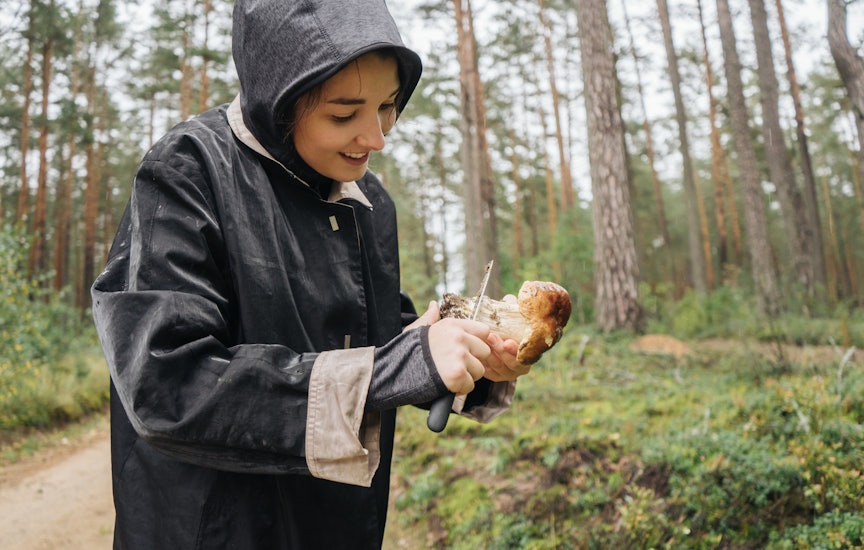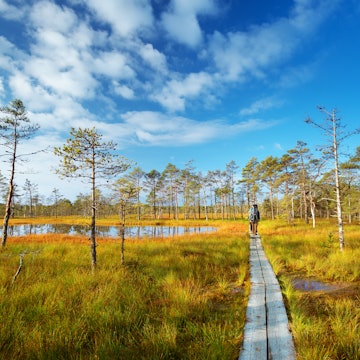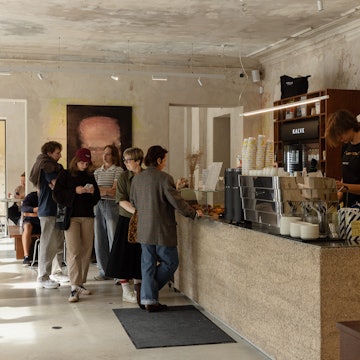

From historic landmarks to countercultural Užupis – get to know Lithuania's capital. Shutterstock
Vilnius is a big breath of fresh air. From the confluence of the Neris and Vilnia rivers, Lithuania's capital stands as a bastion of sustainability in the Baltics with initiatives to protect the environment and its commitment to be climate neutral by 2030.
The Old Town of Vilnius, the European Green Capital 2025, is also a UNESCO World Heritage site. Winding through its cobbled alleyways you'll find a harmonious succession of buildings of different architectural styles ranging from Baltic Gothic to neoclassical, bordering on eclecticism in Užupis (the bohemian creative quarter that is a self-proclaimed – unofficial – republic).
At 700 years young, Vilnius has become the focal point of traditional Lithuanian culture and cuisine, contemporary theater and dance, national and international auteur cinema, and folk, jazz or electronic music festivals in the Baltic States. Here’s how to experience the best of Vilnius on your first visit.
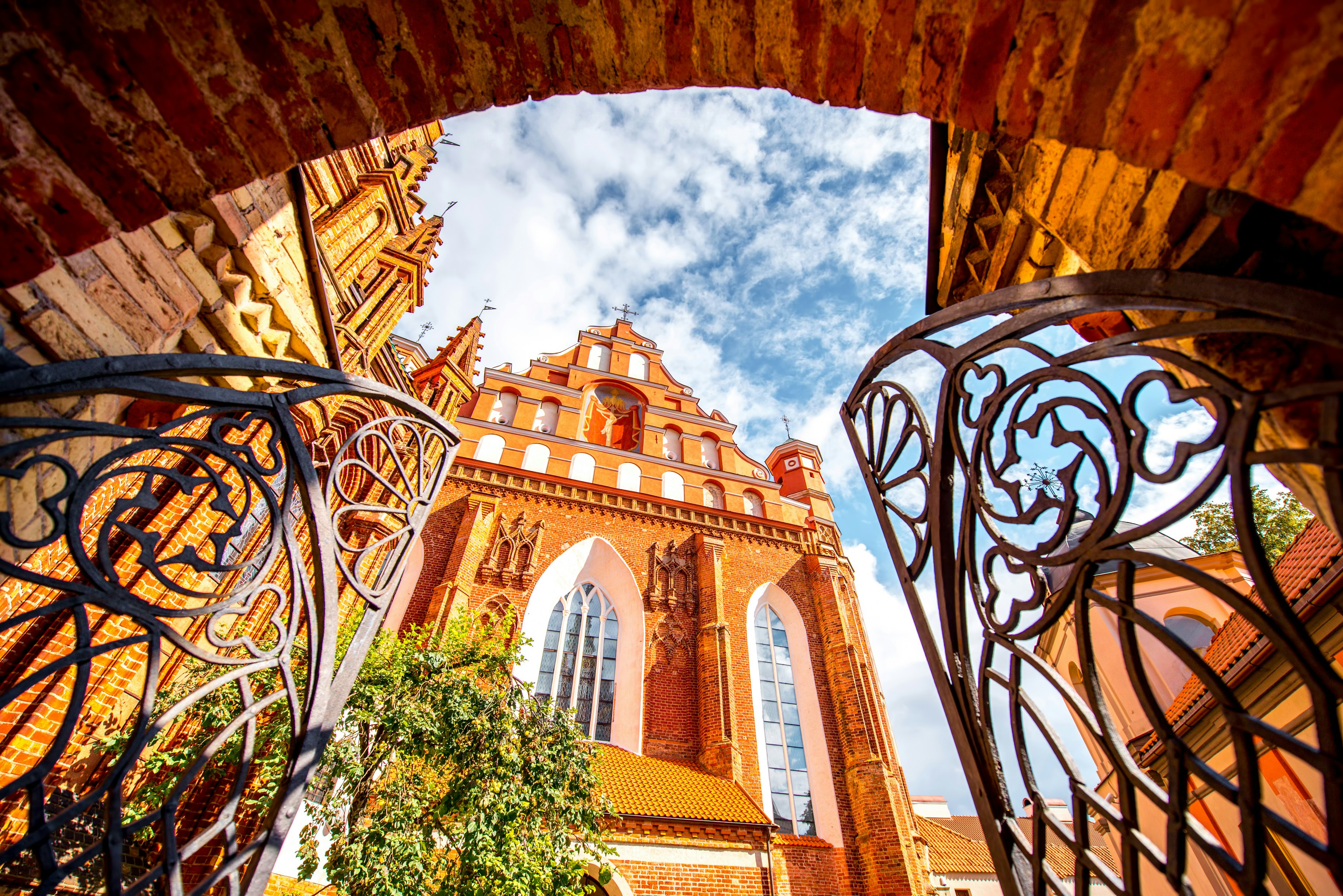
When should I go to Vilnius?
With a busy cultural agenda, any season is a good time to travel to Vilnius. It all depends on the Vilnius you want to discover and the events you would like to attend during your stay.
In spring, you'll find Vilnius at its most vibrant and lively. From April onwards, the temperature is perfect for wandering around the Old Town, sipping a coffee or a refreshing craft beer on a terrace, strolling through the beautiful Bernardine Garden on the banks of the Vilnia, and kayaking or exploring the neighborhoods on the other side of the Neris by bike.
Over 100 films in Lithuanian and English are screened throughout the season during Kino Pavasaris (Cinema Spring) and on the third Saturday in May, every corner of the city gets its original live soundtrack for Street Music Day. And if that's not enough, you'll also have the chance to sample šaltibarščiai, Lithuania's cold – and coolest – beetroot soup at the Pink Soup Fest, a tribute to the creamy summer delicacy with themed games, activities and concerts.
The city buzzes in summer with parties, a national food fair and iconic music festivals, such as the spectacular Lithuanian Song Celebration, a large-scale Intangible Cultural Heritage of Humanity festival that just celebrated its 100th anniversary; the Christopher Summer Festival with its original amalgam of classical, jazz and experimental music (including sailing on the Neris); or LOFTAS, which sets Vilnius abuzz with electronic and techno music in September.
In autumn and winter, you'll find a capital that's breezy and warm despite falling temperatures, with a wide variety of cultural, gastronomic and sporting events, including the Vilnius International Sirenos Theatre Festival's varied programme of contemporary plays (in Lithuanian with surtitles in English, or sometimes in English), the groovy Vilnius Jazz Festival, Vilnius Gastronomy Week and the Christmas Market nights in Cathedral Square.

How much time should I spend in Vilnius?
As well as being a dynamic capital, Vilnius is Lithuania's cultural epicenter, so it's advisable to plan at least a long weekend to explore it. Aside from its architectural heritage, numerous green spaces and endless festivals, the city is full of urban art in open spaces, with several outstanding museums and contemporary art galleries (The National Museum, the Museum of Occupations and Freedom Rights, and the National Gallery of Art shouldn’t be missed), markets full of succulent local produce and restaurants serving soul-food dishes.
Should you decide to stay longer, Vilnius makes a great base to explore more of the country’s heritage. You could follow the course of the Neris northwest to Kernavé, a UNESCO Archaeological Site and Cultural Reserve or visit Trakai Castle, standing on an islet in Lake Galvė that was once the residence of the Great Dukes of Lithuania.
Is it easy to get in and around Vilnius?
Vilnius can be reached by train and bus from Krakow, Warsaw, Rīga or Tallinn. The closest airport, Vilnius International Airport, is only 30 minutes from the central railway station, with train and bus connections. Even though the airport train might be faster, buses are more regular, and the 3G express line is a better option if you stay in the Old Town.
You can't imagine how pleasant it is to discover Vilnius on foot! To make the most of the more than 60% of green areas in the city, I recommend taking breaks between cultural visits to relax in the parks and gardens of the historic center. As an alternative means of transport, you can also get around the Lithuanian capital by bus or bicycle.
Vilnius’ bike sharing scheme, CycloCity, is more geared towards residents, so consider hiring your two wheels from a rental company, such as Velotakas, which provides helmets free of charge and also offers bike tours to iconic landmarks and Pavilniai Regional Park.
If you wish to connect with Vilnius’ nature, hiking trails (or buses) of one to three hours will bring you to the emerald lakes of Verkiai Regional Park, the Belmontas Waterfalls or geological wonders such as the Pūčkoriai Exposure.
Top things to do in Vilnius
On your first visit to Vilnius, there are some unmissable places to fall in love with in Lithuania's capital. As a suggestion, start your itinerary at the Gates of Dawn, wander through the Glass Quarter (former Jewish quarter) and follow Pilies Street – the oldest street in the city – from where you will get your first glimpse of Gediminas Castle, accessed from just behind the Cathedral Square.
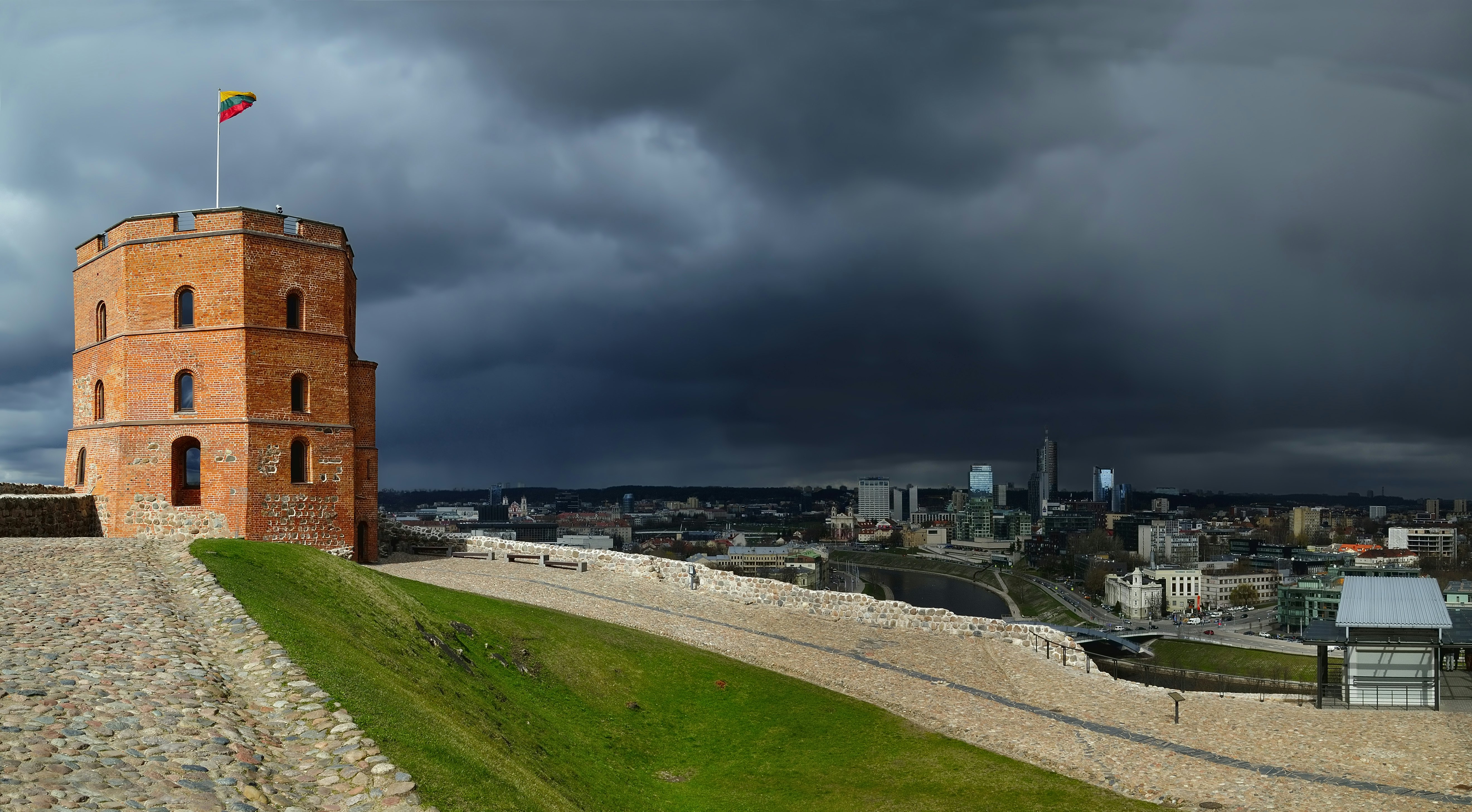
Discover the legend of the Iron Wolf dream
The only surviving keep-style tower of the three that defended the Upper Vilnius Castle in the 15th century is Gediminas Castle & Museum. Legend has it that the choice of this hill for the castle was based on Gediminas' dream of an iron wolf howling at the top.
The tower rooms house an interactive museum about Vilnius' origins as the capital of the Grand Duchy of Lithuania and its historical relationship with Latvia and Estonia, reinforced by the Baltic Way in 1989 – a human chain to regain its independence from the USSR. The Lithuanian flag waves at the top of the castle tower, and from the observation deck you’ll see Vilnius in all its splendor. You can walk up Gediminas Hill for free or take the funicular to go up or down for a euro.
Once back down, head towards the Palace of the Grand Dukes of Lithuania. Individual tickets for any of the three routes around the palace are available, which is handy if you're short on time. If that’s the case, I recommend Route II as in addition to the many carefully restored halls of the Palace ranging from Gothic to Baroque style (all lavishly decorated with huge paintings, tapestries and frescoes) you’ll also gain access to the Observation Tower.
Visit St Anne and its musical garden
Vilnius' most iconic architectural treasure, St Anne’s Church, has stood almost intact since the late 15th century. With a striking late Baltic Gothic façade and 33 types of brick used in its construction, it's no wonder that Napoleon wanted to take the church to Paris in the palm of his hand, as one urban legend has it.
The Bernardine Garden is behind it, a green haven of peace ideal for a stroll soundtracked by its musical fountain or to lie down and read or write by the Vilnia. In summer, enjoy a beer or attend a concert at Bernardinų Kiemas, a space with bars and food trucks ideal for meeting locals. If you're a chess lover and lucky, a local will invite you to play at the chess tables.

Take a bite out of Lithuania
Zeppelin-shaped potato dumplings (cepelinai), wild mushroom soup (miško gribu tirštasriubė), baked pork shank (kepta karka), potato pudding and pancakes (bulviniai blynai and bulvių plokštainis) with sour cream, beef rolls (zrazai), pink soup, pepper steak (pipirinis didkepsnis)... traditional Lithuanian cuisine is an explosion of flavors. Settle in to sample some of these culinary specialities at Lokys, Vilnius' oldest family restaurant or the family-run Bernelių Užeiga chain.
Etno Dvaras, a chain restaurant, is another good introduction to Lithuanian cuisine as they have worked with ethnographers to create a menu that is faithful to the original recipes, representative of Lithuania's ethnographic regions and affordable for all budgets. I recommend Etno Dvaras at 16 Pilies Street as it is a labyrinthine maze of caves and each room is carefully decorated with colorful Lithuanian designs.
If you're traveling to Vilnius between April and September, consider visiting the Open Kitchen Food Market at Tymo Market (on every Friday and Saturday), it's a great time to give your taste buds a treat.
My favorite thing to do in Vilnius
Vilnius fills me with joy. It's one of those cities where walking around at any time makes me feel that I want to live there. Perhaps because Vilnians have always made me feel at home. Or because besides being green and sustainable, it vibes to a rhythm in every corner. All I know for sure is that Vilnius is full of life – and conveys it.
If there's one thing my two favorite districts in Vilnius have in common, it's that they are hotbeds of alternative culture.
In the Stotis District, I love its large-scale graffiti and its bars with original concepts: from the "travel bar" Peronas and its Parkas terrace facing the railway station tracks to the beer pub Šnekutis and Pavilljonas, a glass palace in the middle of a park housing live music concerts. Not far away is one of my favorite contemporary art museums in Europe, the MO Museum, which has a collection of over 6000 works by Lithuanian artists.
Across town and always after relaxing a bit in the Bernardine Garden, I’d recommend crossing the Fluxus Bridge to enter Užupis: the (unofficial) "republic" district of Vilnius, independent since April's Fool 1997. Užupis is art and counterculture at its purest. The neighborhood is much more than crossing the "border" Užupis bridge. From reading its constitution (in your preferred language – it’s displayed on a wall in several languages in Paupio gatvė) or admiring its Angel, Užupis is home to the first Art Incubator in the Baltic States, contemporary art galleries, the Lithuanian Art Centre TARTLE with pieces from the pagan period onwards, sculptures and art installations on every corner – even under bridges – and its bars have plenty of personality.
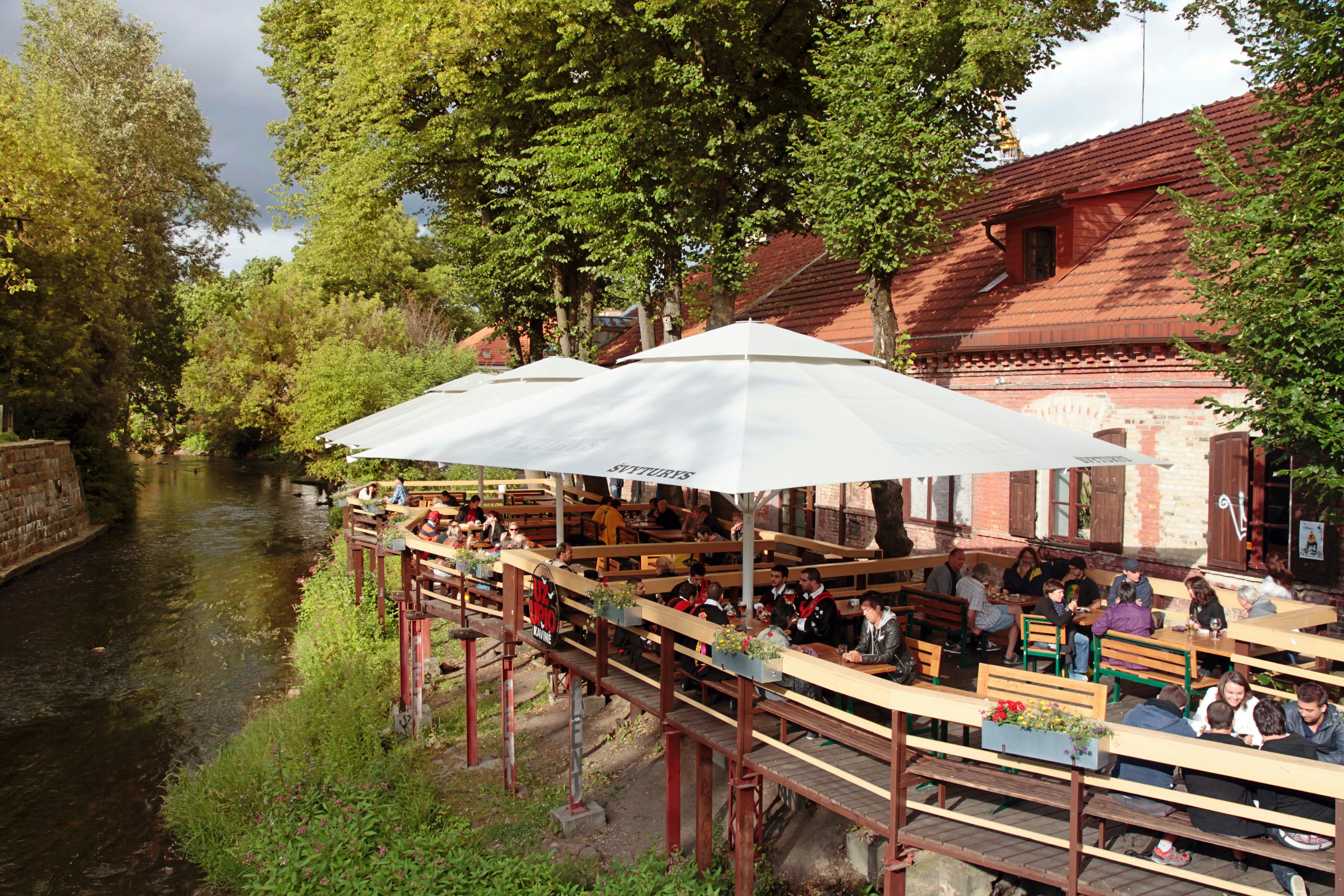
How much money do I need for Vilnius?
The euro is the official currency in Lithuania. If needed, you can exchange money at the exchange offices near the train and bus stations and at the airport. Overall, Vilnius is great value for local food, craft beer and transport. Consider buying a Vilnius Pass if you plan to visit several museums during your stay.
Hostel room (mixed dorm): €15 to €30
Basic room for two: €30 to €60
Self-catering apartment (including Airbnb): from €40
Public transport ticket: under €1 within Vilnius and up to €5 for day trips
Coffee: €2 to €4
Beer/pint at the bar: €3 to €5
Pink soup: €5 to €10
Sandwich: €5 to €10
Dinner for two: €30 to €50
Is it easy to take day trips from Vilnius?
With regular trains and buses to most destinations, Vilnius is a good base to explore the country. For example, it takes 1.5 hrs by bus to Kernavé and 45 mins by train to Trakai.
What language is spoken in Vilnius?
Lithuanian is the official language of Lithuania, although many Vilnians (particularly young people) are fluent in English. Before you go, try to learn basic Lithuanian words and phrases – it's a sign of respect and much appreciated by the locals.
Should I tip in Vilnius?
According to the quality of the service, allocate between 5 and 15% if there are no service fees on the restaurant bill or if you see a tipping jar at the bar or cafe counter.







